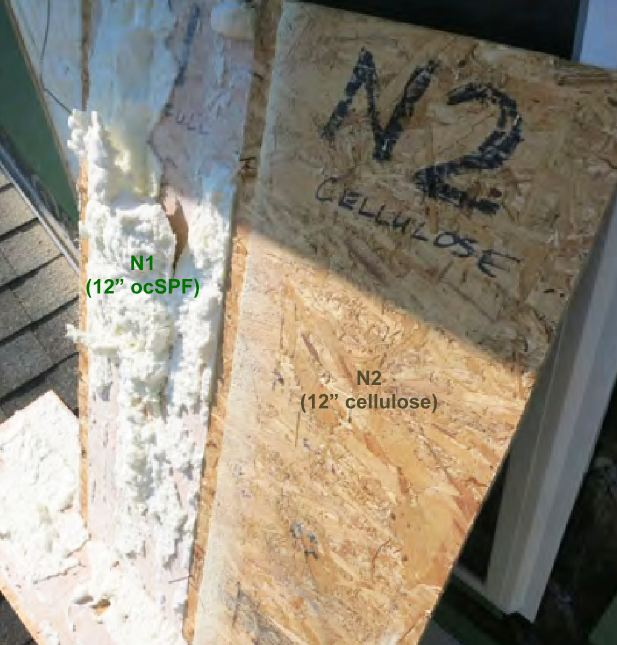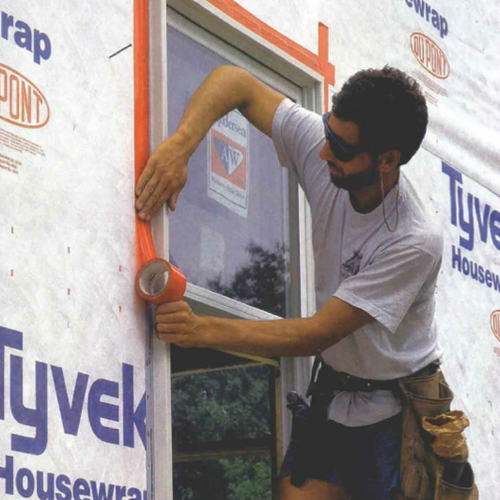
Image Credit: Image #1: Kohta Ueno, Building Science Corporation
Building designers and researchers have begun to realize that computer modeling programs, including WUFI, sometimes falsely predict that certain common wall assemblies — wall assemblies that have been used successfully for years — should be failing. (WUFI is a so-called “hygrothermal” modeling program — that is, a program that calculates heat and moisture flows through building assemblies. For more information on WUFI, see “WUFI IS Driving Me Crazy.”)
Yet experienced builders know that these wall assemblies aren’t failing. So what’s going on?
Something smells wrong about these WUFI results
Several GBA articles, most notably “Monitoring Moisture Levels in Double-Stud Walls,” have mentioned WUFI’s false predictions of failure.
In that November 2013 article, I described a moisture modeling study performed by two researchers, Lois Arena and Pallavi Mantha. I reported, “Arena and Mantha used WUFI to calculate the predicted moisture content of several components of various wall assemblies, including 12-inch-thick cellulose insulated walls. The researchers wrote, ‘Results from WUFI indicate that condensation potential for the double [stud] cellulose walls is extremely high because the OSB in those wall assemblies is entirely outside of the insulation. … WUFI predicts that there is the potential for mold growth on the interior surface of the drywall in all climates. Realistically, we know that this is not true.’”
Arena and Mantha eventually concluded that the source of the error was certain moisture values and mold growth assumptions imported into WUFI from ASHRAE Standard 160. My article continued, “For some reason, the ASHRAE 160 values used by Arena and Mantha produced unlikely WUFI results. … The modeling results don’t pass the sniff test. Arena and Mantha clearly recognize that fact, and they accurately deduced that the anomalies stem from their use…
Weekly Newsletter
Get building science and energy efficiency advice, plus special offers, in your inbox.

This article is only available to GBA Prime Members
Sign up for a free trial and get instant access to this article as well as GBA’s complete library of premium articles and construction details.
Start Free TrialAlready a member? Log in














12 Comments
Additional "Protective Mechanisms" in Double Stud Walls
Martin--great writeup, as always. Just as an FYI to the readers--in re the double stud walls not growing mold--in addition to ASHRAE 160 being too conservative, I also looked into the "protective mechanisms" of the stud bay insulation materials (dense-pack cellulose and open-cell spray foam) in that research. I didn't have time to delve into that in the presentation.
See Sections 6.6 Protective Mechanisms: Overview, 6.7 Protective Mechanisms: Cellulose Walls and 6.8 Protective Mechanisms: Open Cell Spray Polyurethane Foam Walls for further information.
BA-1501: Monitoring Double-Stud Wall Moisture Conditions in the Northeast
http://buildingscience.com/documents/bareports/ba-1501-monitor-double-stud-moisture-conditions-northeast/view
Very interesting blog post…our experience
We use WUFI quite a bit in our work at 475 High Performance Building Supply - looking at hundreds of assemblies across many climate zones - yet for the vast majority of assemblies we come across, it’s not useful. As Joe Lstiburek has said, “…if you need to use WUFI, you've done something wrong.” We would twist that a bit and propose that “If you use WUFI you’re very likely to do something wrong”, because stepping into WUFI might be compared to stepping into a jet airplane cockpit. It’s very complicated and small things can have big impacts.
We also try to not use WUFI as a pass/fail tool. We find WUFI very useful to describe relative levels of risk: this assembly is more/less risky than that one. As insulation levels rise we push for greater airtightness and greater drying reserves in the assembly moisture profile, because as Anton TenWolde has said “Stuff happens. So you need a moisture-tolerant design.” In Kohta’s three year study it says “The damage was limited to some grain raise of the interior surface of the OSB at the cellulose wall, and corrosion of fasteners.” Is that low risk enough? We know it’s not for Joe Lstiburek, who has said, “I would never build that wall because I consider it too risky.”
Our own test
We just opened up the walls in the first double-wall house we built, in 2008. We replaced windows with patio doors, and on the ocean-facing, north wall, everything was bone dry. Despite what Joe L might say, we think it's the best wall system and have continued to build that way. An article I wrote on that house after completion is attached.
Response to Dan Kobert
Dan,
There are at least two possibilities: either (a) these double-stud walls are risky and about to fail, or (b) ASHRAE 160 (and any WUFI run that depends on ASHRAE 160) is spewing out worthless predictions.
I vote for (b).
Or (c)
Too soon to tell. Which has been my personal motto for about 20 years now.
Response to Dan Kolbert
Dan,
I forgot to say, "Thanks for your report." Reports from builders like you are extremely valuable. The fact that the wall you opened up was "bone dry" shows that cellulose-insulated walls are robust, or that you are a conscientious builder who pays attention to details, or both.
Of course, an anecdote is just an anecdote. But your anecdote is encouraging.
Failed Double Stud Wall
I haven't seen any mention on GBA of the recent JLC online article about a failed double stud wall house built in Vermont in the 1980's. Curious what your thoughts are. Not a vary in depth article in my opinion but an interesting subject.
It seems to me that there are numerous examples of double stud walls staying dry against all WUFI bets, however not all double stud walls stay dry - so it is pretty important to figure out what mechanisms can cause failure.
Any thoughts?
Response to Gilbert Fulford
Gilbert,
Dana Dorsett and I discussed that failed double-stud wall in the comments section on this GBA page: Is Cold Sheathing in Double-Wall Construction at Risk?
I wrote, "It seems clear to me that the failure discussed in the JLC article wasn't dense-packed: 'The cellulose had settled badly, leaving the upper portion of most walls entirely uninsulated.' ... If the cellulose settled as badly as described, then this wasn't a dense-pack job."
Dana responded, "I don't think it's at all obvious that they didn't at least TRY to dense pack it.. After ~30 years of fairly extreme moisture cycling it'll settle, even when dense packed."
More words were written. You can click the link and read the exchange if you want.
Par/Pac membrane
Dan,
Thanks for the report. Your 2009 article (thanks for that too) describes the use of a par/pac membrane, "a stretchy reinforced poly sheet" on the interior. I would guess that serves as a vapor barrier, making it very different from the walls that people are questioning.
More on polyethylene vapor barrier
Charlie,
There are at least two philosophies when it comes to installing dense-packed cellulose in walls.
The Par/Pac system is loyal to the 1980s concept of a polyethylene vapor barrier. That's what the Par/Pac membrane is -- a tough, reinforced polyethylene vapor barrier.
The other approach uses InsulWeb, which is neither a vapor barrier nor an air barrier. InsulWeb is a fabric that freely allows air to escape from the stud bays as the stud bays are packed with cellulose.
Take your pick. I prefer this type of wall to be able to dry to the interior, so I'd probably choose InsulWeb over Par/Pac.
Par Pac
Yeah, our insulation contractor used ParPac - one of the few times we ever used it. Switched to Insulweb after this job. I was nervous about it, but frankly by the time they get done stitching it I'm not sure how much of a vapor barrier it is. And we were pretty vapor-open to the exterior.
The best formula for success...
Is to use time-proven assembly approaches and focus on *airtightness*. Using WUFI to make-or-break a proposed building assembly is so misguided, sigh, yet if I had a dollar for every time I hear "Can you run a WUFI on that"?... hopefully more of these exposes will show people the light! Hallelujah!
Log in or become a member to post a comment.
Sign up Log in